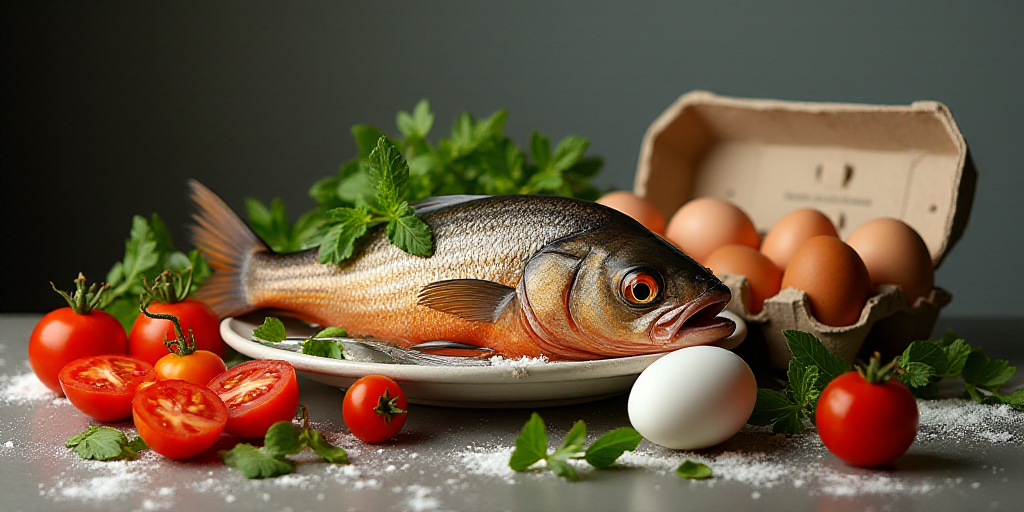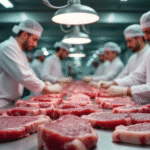Introduction
As temperatures rise, food becomes more vulnerable to spoilage. Bacteria multiply faster, proteins get easily contaminated, and vegetables and fruits wilt or ferment within hours. Heat, humidity, and sugars create a favorable climate for microorganisms causing foodborne illnesses. In the summer, proper food preservation isn’t just a luxury or obsession; it’s a public health necessity.
Chef Mariana Orozco’s Advice
Chef and author of the zero-waste cookbook “Cocina mucho, desperdicia poco y ahorra más,” Mariana Orozco emphasizes the importance of understanding bacterial behavior. “Bacteria love vacations, especially when there’s heat, sugar, and humidity,” she explains. Mariana offers a guide to avoid common mistakes that can be costly during hot weather.
She points out, “What’s often overlooked is not what’s inside the fridge but what’s left outside for too long before refrigeration.” People often underestimate the impact of prolonged exposure to heat on food.
Maintaining the Cold Chain
Although refrigerators maintain temperatures between 4 and 5 degrees Celsius, food deterioration begins before reaching the fridge. From market to home, poultry and seafood can only be left unrefrigerated for 30 minutes. “After 30 minutes, poultry starts to spoil,” Mariana explains. “For seafood, the margin is only 20 minutes.” Therefore, she recommends purchasing proteins last while ensuring immediate refrigeration without delays.
Addressing Structural Issues
The lack of ice at markets and the absence of refrigeration in poultry shops pose a significant problem. “As consumers, we should demand safe conditions for our food,” Mariana advises. “For instance, only buy chicken from stalls with ice both underneath and on top to maintain a suitable temperature.” She also encourages freezing as much as possible, cooking only what’s needed, and regularly checking the condition of stored food at home.
Cooling Hot Foods Before Refrigeration
Yes, but there’s a trick. The hot food itself doesn’t suffer, but changing the internal thermal balance can spoil already refrigerated items. The solution: cool cooked food rapidly before refrigeration.
- Quick cooling: Use glass or BPA-free plastic containers, place them in ice water baths, or use silicone bags with ice to cool soups without dilution.
- Portion separation: Divide large quantities into smaller containers for faster cooling.
Freezing: A Valuable Ally
“Freezing is the most effective home preservation method,” Orozco asserts. Almost anything can be frozen: soups, stews, blanched vegetables, chopped fruits, raw doughs, and even tortillas.
- Cool before freezing: Never freeze anything hot.
- Use proper containers: Avoid filling containers to the brim to allow for expansion.
- Remove air: In airtight bags, remove air to prevent freezer burn.
- Portion grouping: Freeze in individual or family-sized portions, so you only defrost what you’ll use.
When thawing, never do it at room temperature. Move items from the freezer to the refrigerator a day ahead or use the microwave’s defrost setting if immediate defrosting is necessary.
Key Summer Tips (Beyond Refrigeration)
Buy less, but more frequently. Plan menus well and avoid large purchases that might spoil before use.
Preserving fruits and vegetables: Classify them by ripeness level and water content. High-water content items (like strawberries, cucumbers, lettuce, or zucchini) should be refrigerated immediately and consumed soon. Products like potatoes, onions, or carrots last longer and can be stored outside the fridge in a cool, dry place. Mariana Orozco recommends storing fresh herbs like flowers: in a glass of water, covered with a bag in the refrigerator. Finally, “never wash fruits and vegetables before storing; do it only before consumption. Moisture accelerates decomposition.”
Cooked foods: Leaving cooked food to cool at room temperature can be dangerous. “Two hours in these temperatures are enough for a pot of beans to become a health risk,” Mariana affirms. Therefore, she recommends speeding up the cooling process, refrigerating as soon as temperatures drop, and never leaving leftovers out overnight.
Mariana also encourages rethinking what we consider normal. “We’ve become so accustomed to poor practices that some believe chicken always smells bad or that everything must be overcooked to avoid getting sick. In reality, we’re correcting mistakes made from the moment of purchase.”






